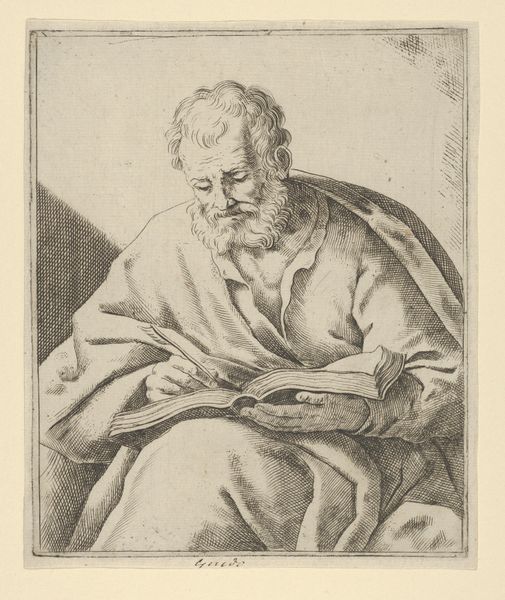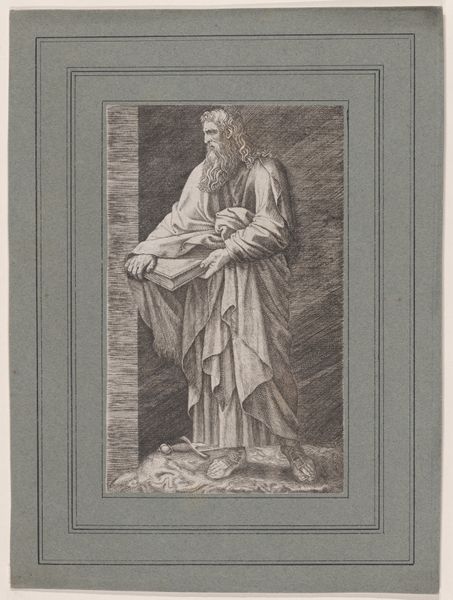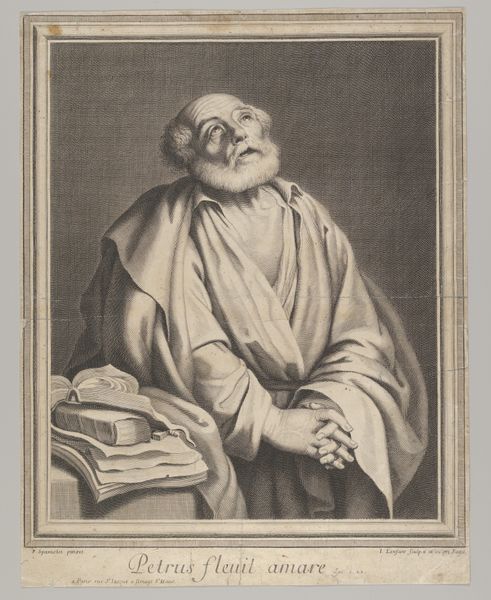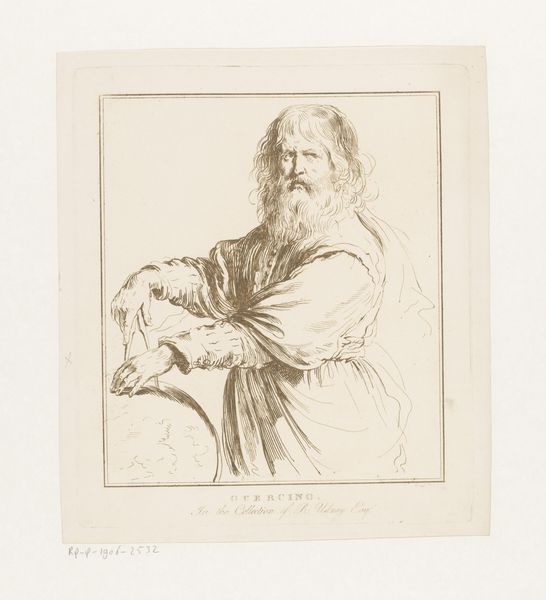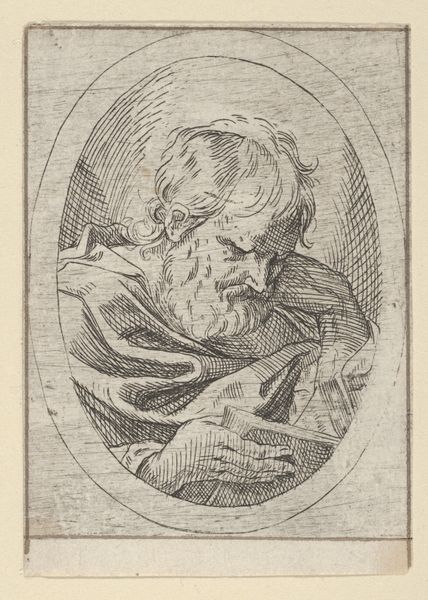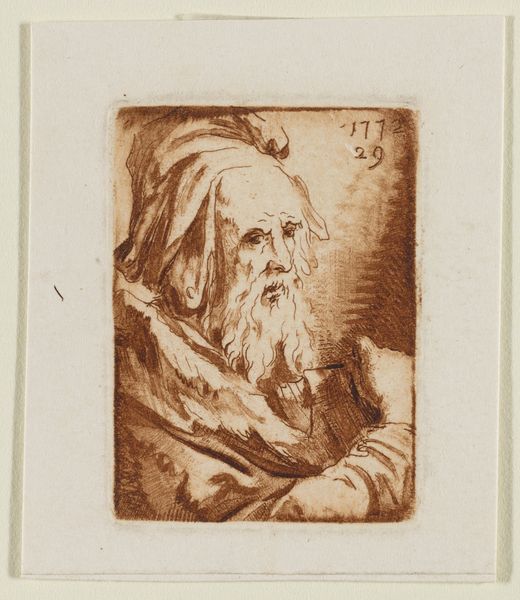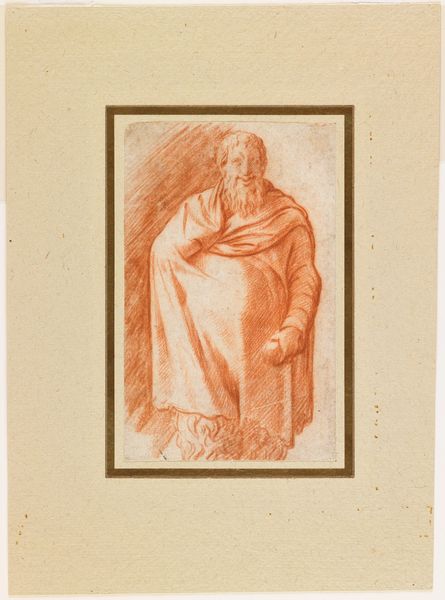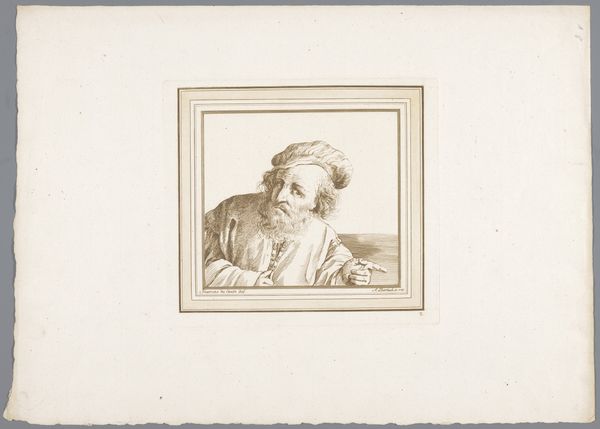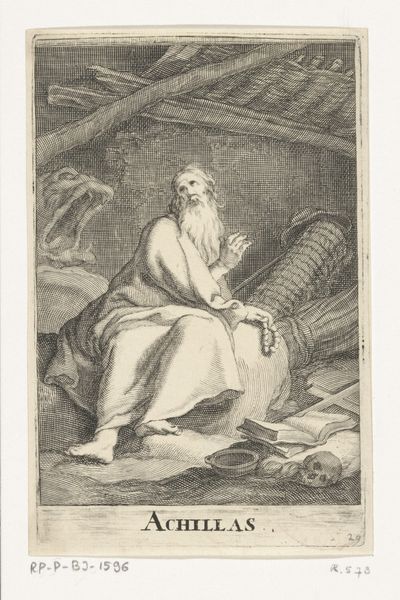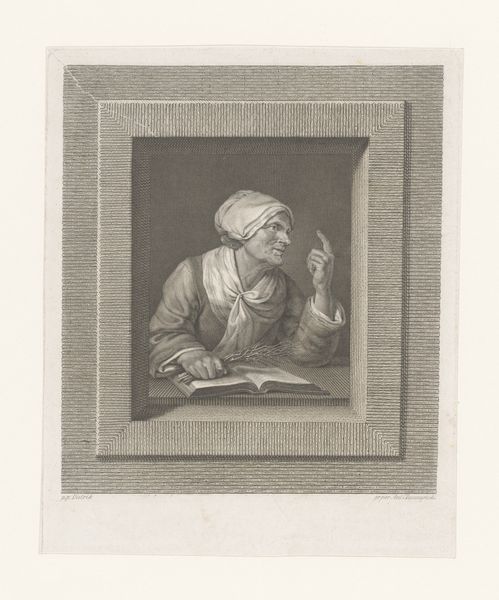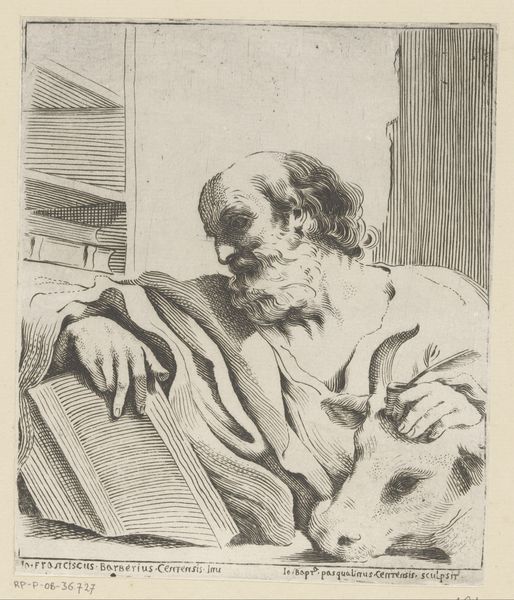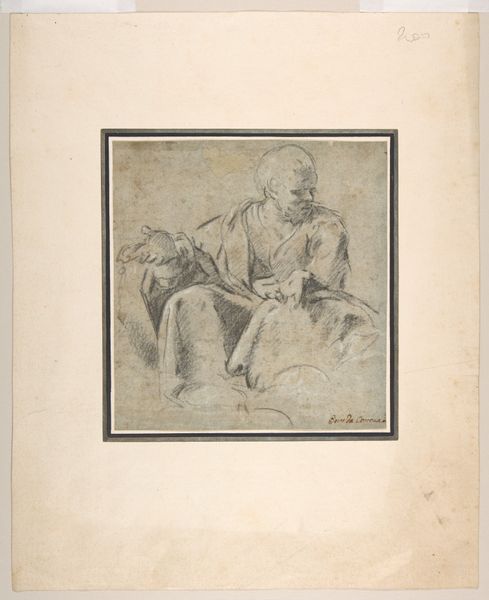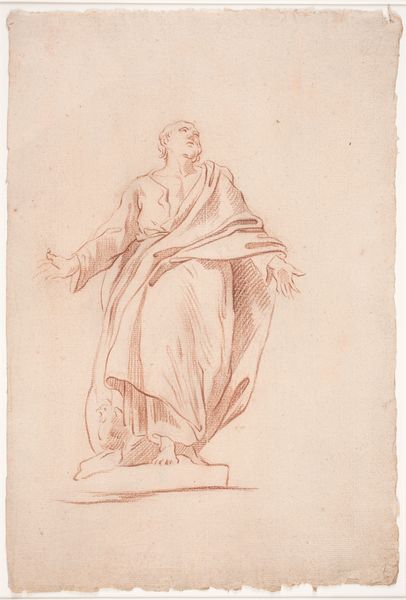
drawing, paper, ink
#
portrait
#
drawing
#
medieval
#
book
#
pencil sketch
#
figuration
#
paper
#
ink
#
line
#
genre-painting
#
history-painting
#
academic-art
Dimensions: height 343 mm, width 288 mm
Copyright: Rijks Museum: Open Domain
Curator: What a striking image! We're looking at "Zittende oude man, schrijvend in een boek," or "Seated Old Man Writing in a Book," a drawing rendered in ink on paper by Adam von Bartsch, created in 1783. It’s currently held at the Rijksmuseum. Editor: My first thought? The solitude. There's an immense quiet emanating from this piece. It's incredibly intimate, like we're intruding on a very private moment of reflection. Curator: Absolutely. Looking at Bartsch’s process, the fineness of the ink work, it is amazing. He’s really using line to generate form, weight, and texture – from the thin, almost scratchy lines delineating the man's beard to the broader strokes defining the drapery of his robes. Editor: It makes me think about labor, and the very act of writing itself in that historical context. Writing and reading were not democratized skills; literacy signified class, status, often tied directly to religious or political power. What was being recorded and whose stories are not written is important to reflect on when looking at pieces such as this. Curator: That's insightful. The quality of the paper, the specific ink used, and the techniques—these choices all contributed to the artwork’s material value and cultural significance at the time, no doubt consumed by those of a higher status. This work might have even functioned as a study or design. The artist's labor in the studio would be distinct from the dissemination and interpretation of these skills for trade. Editor: Exactly, this adds another layer of understanding— the work exists within and because of certain cultural infrastructures. How it speaks to historical understandings of intellectual and manual labor adds so much meaning to that intimate portrait. We need to be attentive not only to who is depicted, but to the conditions that produced its meaning. The act of writing as work is the foundation for many systems in our lives. Curator: I completely agree; the drawing technique allows the artist to play with textures and create a very detailed finished drawing that does indeed spark discussion about class dynamics and knowledge hierarchies. I had never reflected on the intimacy involved, I find myself with a new and compelling appreciation for the materiality and intellectual value produced and portrayed within. Editor: This drawing reminds me of the power held within private moments of contemplation. These reflective pieces are crucial as places of respite, where histories intersect, reminding us that all art lives inside complex sociocultural dynamics.
Comments
No comments
Be the first to comment and join the conversation on the ultimate creative platform.
